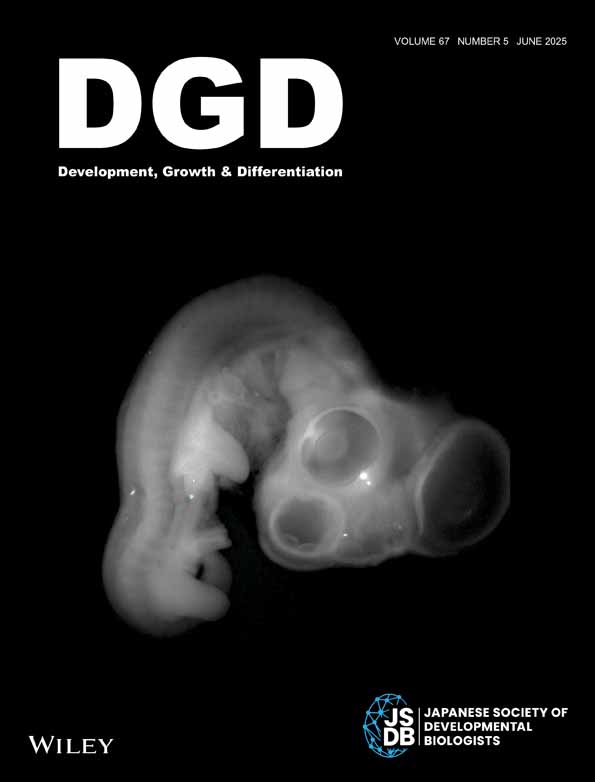Localization of an Exogastrula-Inducing Peptide (EGIP) in Embryos of the Sea Urchin Anthocidaris crassispina
(Exogastrula-inducing peptide (EGIP)/gastrulation/acidic vesicle/sea urchin/exogastrulation)
Abstract
Exogastrula-inducing peptides (EGIPs) are present in the unfertilized eggs and embryos of the sea urchin Anthocidaris crassispina. They induce exogastrulation when added exogenously to the embryos. The localization of EGIP-D during embryogenesis has been explored using polyclonal antibodies against EGIP-D. Immunofluorescent staining revealed that EGIP-D is stored in the cytoplasm of immature oocytes and is concentrated into vesicles in unfertilized eggs. At fertilization, the vesicles containing EGIP-D (EGIP-vesicles) migrate to the cortical surface of the zygotes and are distributed in a ring-like pattern at the apical surface of blastomeres, disappearing from basal surfaces and those adjacent to neighboring cells, during development from cleavage stages to larval stages. Mesenchyme cells also contain the vesicles but no such polarized distribution of vesicles is apparent. Acidic vesicles with a similar polarized distribution were examined by staining with acridine orange, which revealed that acidic vesicles were in close proximity to the surface of eggs at fertilization and were then distributed in a ring-like pattern at the apical surface of blastomeres as are the EGIP-vesicles. Furthermore, immunoelectron microscopy revealed that EGIP-D is present in vesicles that are located at the apical surface of blastomeres. The significance of the localized distribution of EGIP-D is discussed in relation to its function.




